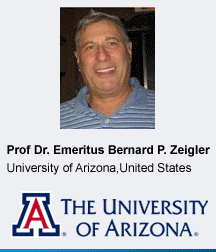AUTHOR GUIDELINE:
Papers should be original contributions and should not be under consideration for any other conference or publication at the same time. You can send word file only for either Abstract and or Full paper.
1. Instructions for Abstract Submission: (not more than 550 words)
Abstracts must contain the title of the paper, name(s) and affiliation(s) of the author(s), and keywords (5-10 keywords organized alphabetically).
2. Instructions for Full Paper Submission:
Full papers should be between 8 pages including tables, figure and references at 1.5 line spacing and Times new Roman 12 font size. Each additional page will be charged USD 25. Maximum 20 Pages.
Paper structure: Papers should be prepared in the following order:- Introduction to explain the background work, the practical applications and the nature and purpose of the paper.
- Body to contain the primary message, with clear lines of thought and validation of the techniques described.
- Conclusion
- Acknowledgements (when appropriate)
- References
- Appendices (when appropriate)
3. FORMATTING YOUR DOCUMENT
Papers must be written in A4 paper size. (21cm x 29.7 cm) and the automatic margins that have been set for this paper size must be strictly adhered to for all text, headings, tables and figures.As indicated in the template, papers should be prepared in single column format (192 mm × 262 mm). Do not number pages on the front, as page numbers will be added separately for the preprints and the Publication.
i. Title Page
The first page should include:
(a) Conference Title
Click on the existing text and enter the name of the congress.
(b) Title
Click on the existing text and enter the title of the paper using sentence case
(c) Each Author's Name and Affiliation, including present address
- Authors' names: Remember to include the correct superscript linking to the appropriate affiliation details.
- Affiliations: Remember to include the correct superscript linking to the appropriate author details.
(d) Abstract
- (150–250 words) Insert an abstract of 50–100 words, giving a brief account of the most relevant aspects of the paper.
(e) Keywords (5–10)
ii. Tables
All tables should be numbered with Arabic numerals. Headings should be placed above tables, left justified. Leave one line space between the heading and the table. Only horizontal lines should be used within a table, to distinguish the column headings from the body of the table, and immediately above and below the table. Tables must be embedded into the text and not supplied separately.
iii. Illustrations
All figures should be numbered with Arabic numerals (1, 2,). All photographs, schemas, graphs and diagrams are to be referred to as figures.
Figures must be high quality which is a 300 DPI resolution to produce a high quality output. Authors are suggested to avoid any illustration which is unclear, diminishing and has fuzziness and low readability. The table and figure must not be distorted, out of margin and numbers can be seen clearly in the illustrations.
v. References
Citation
Reference citations in the text should be identified by numbers in square brackets. Some examples:
1. Negotiation research spans many disciplines [3].
2. This result was later contradicted by Becker and Seligman [5].
3. This effect has been widely studied [1-3, 7].
Reference list
The list of references should only include works that are cited in the text and that have been published or accepted for publication. Personal communications and unpublished works should only be mentioned in the text. Do not use footnotes or endnotes as a substitute for a reference list.
The entries in the list should be numbered consecutively.
Journal article
Hamburger, C.: Quasimonotonicity, regularity and duality for nonlinear systems of partial differential equations. Ann. Mat. Pura Appl. 169, 321–354 (1995)
- Article by DOI Sajti, C.L., Georgio, S., Khodorkovsky, V., Marine, W.: New nanohybrid materials for biophotonics. Appl. Phys. A (2007). doi:10.1007/s00339-007-4137-z
Book
Geddes, K.O., Czapor, S.R., Labahn, G.: Algorithms for Computer Algebra. Kluwer, Boston (1992)
Book chapter
Broy, M.: Software engineering — from auxiliary to key technologies. In: Broy, M., Denert, E. (eds.) Software Pioneers, pp. 10–13. Springer, Heidelberg (2002)
- Online document Cartwright, J.: Big stars have weather too. IOP Publishing PhysicsWeb. http://physicsweb.org/articles/news/11/6/16/1 (2007). Accessed 26 June 2007
vi. Footnotes
Footnotes should be avoided if possible. Necessary footnotes should be denoted in the text by consecutive superscript letters. The footnotes should be typed single spaced, and in smaller type size (8pt), at the foot of the page in which they are mentioned, and separated from the main text by a short line extending at the foot of the column.
Vii Ethical Responsibility
All conference associated journals are committed to upholding the integrity of the scientific record. As a member of the Committee on Publication Ethics (COPE) the journals will follow the COPE guidelines on how to deal with potential acts of misconduct.Authors should refrain from misrepresenting research results which could damage the trust in the journals, the professionalism of scientific authorship, and ultimately the entire scientific endeavour. The manuscript has not been submitted to more than one journal for simultaneous consideration.
4. Full Paper Templet
Note:
GCOET wish you success with your publication. Should you experience any difficulties during the preparation of your paper, please contact the Guest Editor for further information admin@gcoet.org









